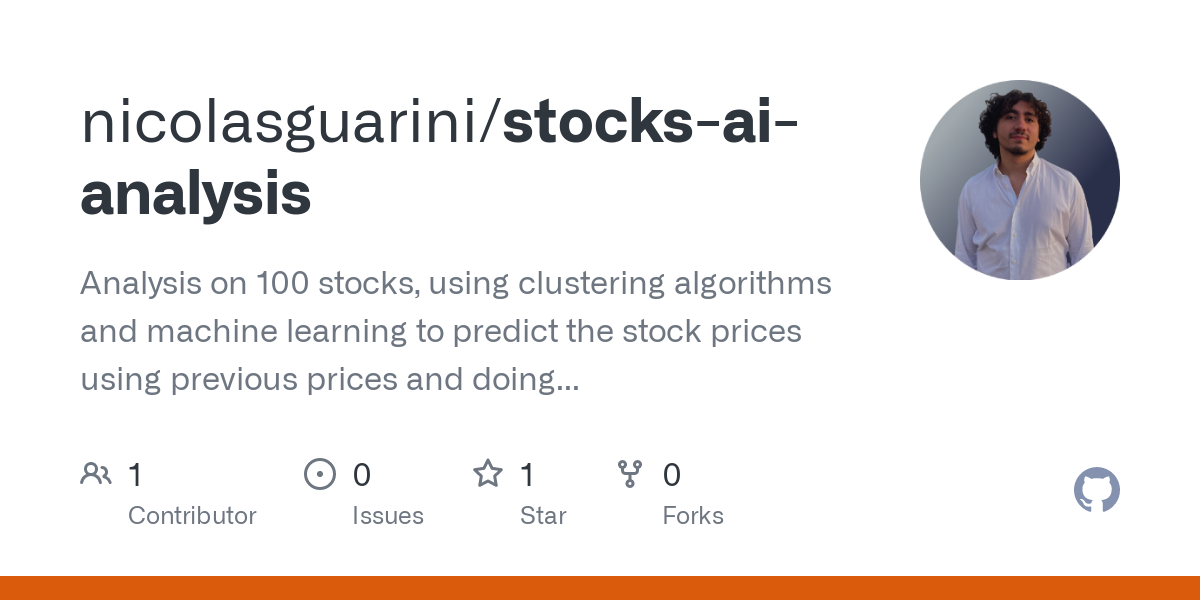It is smart to start small and scale up gradually when trading AI stocks, especially in risky environments such as penny stocks and the copyright market. This method will allow you to build up experiences, develop models, and effectively manage the risk. Here are 10 top tips for gradually scaling up your AI-based stock trading operations:
1. Begin with a strategy and plan that are clearly defined.
Before you begin, establish your goals for trading and risks. Also, determine the market segments you are interested in (e.g. penny stocks and copyright). Start with a smaller and manageable part of your portfolio.
What’s the reason? Having a clearly defined business plan will assist you in making better choices.
2. Test with Paper Trading
Tips: Begin by using the process of paper trading (simulated trading) using real-time market data without risking actual capital.
The reason: You will be able to test your AI and trading strategies under live market conditions before scaling.
3. Pick a Low-Cost Broker Exchange
Tip: Use a brokerage or exchange that charges low fees and allows fractional trading or investments of a small amount. This is particularly helpful when you’re just making your first steps using penny stocks or copyright assets.
Examples of penny stocks: TD Ameritrade Webull E*TRADE
Examples of copyright include: copyright, copyright, copyright.
Why: Reducing commissions is crucial especially when you trade less frequently.
4. Choose a Specific Asset Category Initially
TIP: Concentrate your studies by focusing on one class of asset beginning with penny shares or copyright. This will reduce the level of complexity and allow you to focus.
The reason: Having a specialization in one area allows you to build your expertise and reduce your learning curve, before taking on different asset types or markets.
5. Use small positions sizes
Tip: Minimize your exposure to risks by keeping your position sizes to a low proportion of the value of your portfolio.
Why: It reduces the chance of losing money while you improve the accuracy of your AI models.
6. As you become more confident you will increase your capital.
Tips: If you’re consistently seeing positive results a few weeks or months you can gradually increase the amount of money you trade however only if your system is demonstrating solid results.
The reason: Scaling up gradually allows you build confidence and understand how to manage your risk before making large bets.
7. Focus on a Basic AI Model First
Begin with basic machine models (e.g. a linear regression model or a decision tree) to forecast copyright or stocks prices, before moving onto more complex neural networks and deep-learning models.
Simpler models are easier to comprehend, maintain and optimise, making them ideal for people who are just beginning to learn AI trading.
8. Use Conservative Risk Management
TIP: Follow strict risk control regulations. These include tight stop-loss limits, position size limits, and prudent leverage use.
Why: Conservative risk management prevents large losses early in your career as a trader and assures that your strategy will be robust as you increase your trading experience.
9. Reinvest the Profits back to the System
Then, you can invest the profits in making improvements to the trading model, or scalability operations.
Why it is important: Reinvesting profits can help you increase your return over time. It also helps help to improve the infrastructure that is needed for bigger operations.
10. Make sure you regularly review and enhance your AI models frequently to ensure that you are constantly improving and enhancing them.
Tips: Observe the performance of AI models on a regular basis and work to improve them using more data, new algorithms, or enhanced feature engineering.
The reason: Regular model optimization enhances your ability to forecast the market while you build your capital.
Consider diversifying your portfolio after you have built a solid foundation.
Tips: If you have a solid base and your system has proven to be profitable, you should consider expanding your business into other asset classes.
What is the reason? Diversification can help you reduce risks and increase returns. It allows you to profit from different market conditions.
Beginning small and then scaling up by increasing the size, you allow yourself time to learn and adapt. This is vital for the long-term success of traders in the high risk conditions of penny stock as well as copyright markets. Take a look at the top continue reading about stock ai for blog tips including best ai copyright prediction, ai for trading, ai stock prediction, ai stock trading bot free, ai stocks, ai for trading, ai penny stocks, stock market ai, stock ai, best ai stocks and more.

Top 10 Tips To Combining Ai With Fundamental Analysis For Stock Pickers, Predictions And Investments
Combining AI and fundamental analysis can enhance the accuracy of stock pickers. This gives investors a more comprehensive method for making investment decisions. Here are 10 top tips to integrate AI and fundamentals analysis to enhance stock forecasts and investment decisions:
1. Use AI to assist in Data Gathering and Processing
Tips: Make use of AI to streamline data collection, cleaning and analysis, such as economic indicators and financial statements.
Why: AI can quickly analyze huge amounts of data, discern trends and the most important metrics. This helps save time and ensures that no important information is missed.
2. Incorporate Key Financial Ratios into AI Models
Tip Tips: Feed AI algorithms employ essential metrics like P/E ratio, P/B/R ratio, debt-to-equity ratio, ROE and cash flow free.
What are they? They are ratios that can help to assess the value of a company’s assets and its financial health. AI is able to process these indicators more quickly, and detect patterns that human analysts might not have noticed.
3. AI Predictive Power and Fundamental Insights: Mix the two
Tip Make use of AI to improve predictions by using conventional fundamental analytics, for example the ability to forecast stock movements based on historical performance and forward looking fundamental metrics.
Why: AI models include more variables and complex patterns than conventional models. This improves predictions that are founded on fundamental analysis.
4. Automated Earnings Models, Valuation Methodologies and Valuation Method
Utilize AI to improve or automate earnings estimates (such as Discounted Flow Models) by incorporating historical and current data.
What’s the reason? AI is able to adjust models quickly when new data becomes available, which allows for more precise forecasts and stock prices in real-time.
5. Integrate Macroeconomics and Company Fundamentals
Use AI to blend macroeconomic indicators (interest rate or inflation rate and GDP) with micro-level data (company earnings and management quality, for example). ).
Why: AI can help you improve your stock forecasts by studying the impact of external factors.
6. Natural Language Processing is a powerful tool for earnings and news calls.
Utilize NLP to integrate unstructured data like social media, news articles, earnings calls transcripts or other sources to enrich the company’s data.
What is the reason: NLP allows AI to extract the sentiment and information from qualitative data, giving additional context to basic metrics, for example, identifying management changes or market issues that could impact future growth.
7. AI Real-Time Analysis and Long-Term Analysis
Tip – Use AI to keep track of real-time market data and apply fundamental analysis to guide investment decisions over the long-term.
The reason: AI can offer quick and efficient responses to real-time market shifts, while fundamental analysis offers a long-term perspective, creating a balanced investment strategy.
8. AI-Enhanced Screening Finds Opportunities Hidden
Tip: Develop AI models which can screen for overvalued or undervalued stocks, by combining fundamental metrics and market behavior.
The reason: AI can reveal hidden opportunities in investment by detecting of market patterns that are not visible with conventional fundamental analysis techniques.
9. AI Insights helps you fine-tune your risk management
TIP: Use AI for risk management. Analyze the stability of a company’s financial health and predict potential risks like the impact of regulatory changes or issues with liquidity in light of the basic characteristics of the business.
AI can be used to analyze the risk and modify positions to help protect your portfolio and maximize its fundamental value.
10. Make sure to regularly review models with new Data
Tip: To refine your predictions and adjust your stock selections Feed continually updated financial information earnings data, macroeconomic indicators to the AI system.
Since financial data and market conditions change constantly, it is important to keep your models up-to-date with the latest information. This will allow you to make informed stock selections.
Bonus: Use AI to Automate Portfolio Rebalancing
Tip: Use AI to monitor and adjust your portfolio according to fundamental changes, such as when the financial condition of a business deteriorates.
The reason: AI can automate the process of portfolio rebalancing in response to fundamental triggers which help to ensure an optimal allocation of assets, without constant manual intervention.
Combining AI with Fundamental Analysis could result in a more data-driven approach in investing and stock-picking. AI improves the ability to recognize patterns and adjust to the new information. Fundamental analysis is an excellent basis for making long-term investments. This approach is a hybrid one that will allow you to make well-informed quick, accurate, and effective investment decision. Read the top helpful site about ai stocks for website recommendations including ai stock prediction, best ai copyright prediction, stock market ai, ai stock analysis, trading chart ai, best ai copyright prediction, ai stock, stock ai, stock ai, trading chart ai and more.
